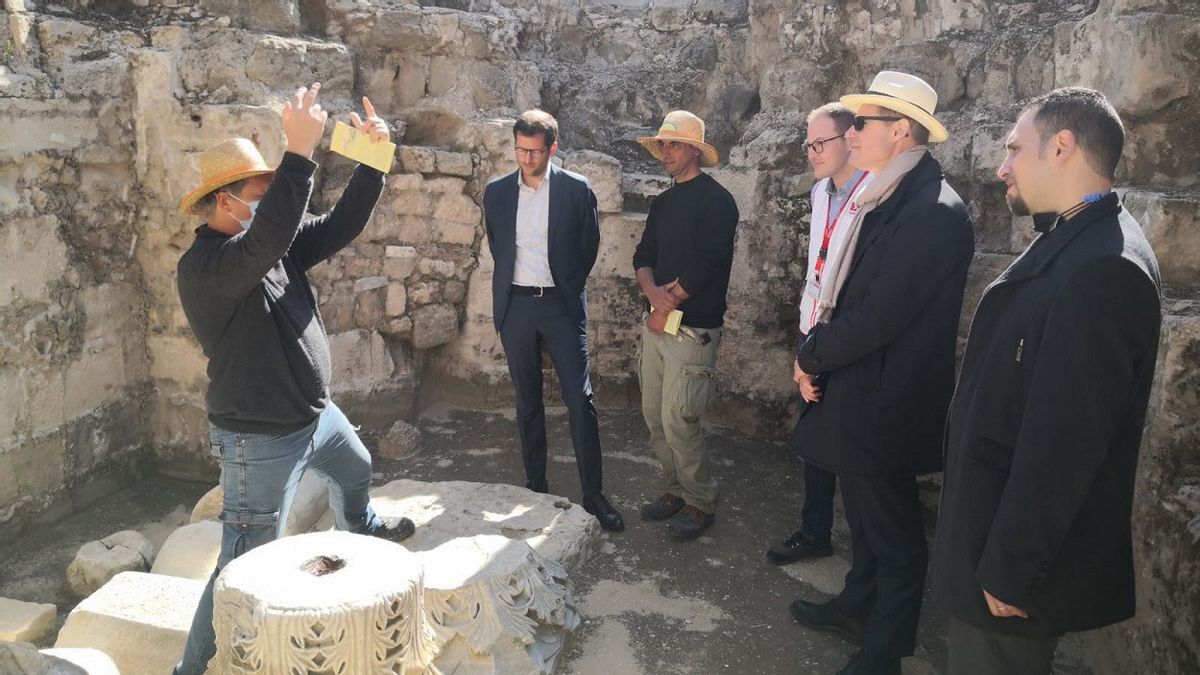JAKARTA - Just meters from the Mediterranean coast, archaeologists in Gaza have uncovered an ancient wonder in the Palestinian enclave.
"There is a saying that Gaza lies above treasures," said Nemaa El Sawarka, a guide and archaeologist who works in the ruins of the Saint Hilarion Monastery in Gaza, Palestine.
The monastery south of Gaza city is believed to be one of the largest found in the Middle East.
While students strolled around the site, gazing at the baths and mosaics, El Sawarka lamented the lack of awareness among Gazans about their rich heritage.
"People come to me who don't know this place," he said, next to a collection of mosaic shards labeled with numbers.
"They talk about stones and that this place is Christian, but we say this is our heritage," El Sawarka said.
About 1,500 Gazans visit Saint Hilarion every week, according to staff, a significant increase since before the pandemic when only 1,000 people visited the site each month.
Dating from the fourth century AD, Saint Hilarion Monastery has a crypt and a place for pilgrims to live.
Gaza's antiquities are testament to the leaders who have claimed the Eastern Mediterranean for centuries past, but preserving such a heritage has proven challenging.
The Palestinian territories have been under an Israeli-led blockade for 15 years, with the entry of goods and people tightly controlled.
Rene Elter, an archaeologist and scientific director of the Saint Hilarion restoration project, said the team was hindered by border restrictions.
"To do the reinforcement and restoration of the crypt, we had to make 3,000 beams," he says, of stone cut to recreate the arched ceiling that stood centuries ago.

"These tools are in the West Bank. In Gaza they do not exist; there is no masonry tradition in Gaza. It is impossible to import mechanical tools into Gaza, to cut stone, so what do we do? We adapt. We make the tools ourselves, " he said.
While most of the site has been excavated since the monastery was discovered in the 1990s, some areas have not been recovered due to a lack of resources. Beside the baths, a striking mosaic stands under the roof, protecting the rows of animals marked in the stone.
But elsewhere, the mosaics are invisible under gravel or sand, because there is nothing to protect them from the bleaching rays of the sun.
Archaeological work in recent years has been funded by the British Council, the UK government's Department for Digital, Culture, Media and Sport, and the Aliph Foundation which focuses on heritage in conflict zones.
While such investments are welcome, El Sawarka, 27, said the financing nature of such projects meant there were loopholes during which work stopped.
"The thing we are most afraid of is between contracts, in the period between signing contracts, there are periods of interruption," he said.
As a student, he received three months of training at the site in 2018. He returned two years ago to work on the project, which is run by the French organization Premiere Urgence Internationale.
The NGO has trained dozens of Gazan youths, whom Elter hopes represent the future of archeology in the region.
"There are many sites to explore, but Palestinians don't have the means to make the most of them," he said.
This year a fifth-century Byzantine church opened to visitors in northern Gaza, while in February workers uncovered a grave estimated to be 2,000 years old.
"Our job is to create a team that can manage their legacy for years to come," said Elter.
France's Development Agency last month announced it would fund a canopy to cover the site, paving the way for the hidden mosaics to be made public.
El Sawarka described the site as "the best place in Gaza". But as long as the Palestinian territories remain blockaded, few outsiders have had the chance to see the ancient site exposed.
For Elter, who has worked in Gaza intermittently for the past two decades, digging at the site is unlike anywhere else in the world.
"Here, everything is difficult and you have to adapt. We adapt, we work with people who have the drive to do something extraordinary."
The English, Chinese, Japanese, Arabic, and French versions are automatically generated by the AI. So there may still be inaccuracies in translating, please always see Indonesian as our main language. (system supported by DigitalSiber.id)








